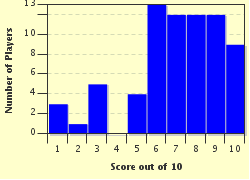Quiz Answer Key and Fun Facts
1. We've all heard (herd?) of the cowcatcher, but where would he/she/it be found?
2. The "yard goat" would most likely be doing what?
3. On almost every train run, the crew would run across frogs on the tracks. What did those frogs do?
4. You're a locomotive engineer, and have been given a "camelback" to use. What will you do with it?
5. Here it is - the question dealing with our title. Railroad switchmen worked any place that trains operated; alongside trains; on trains, or in the (switch)yard. But switchmen were often called "snakes". How did they ever get such a nickname?
6. Train lore is full of bull - uh - railroad bull, that is! Exactly what was "railroad bull?"
7. Here's another reptile question. If you were riding coast-to-coast on the "varnish", you'd hope for a good lizard scorcher! Why?
8. Train crews could often be found on the "catwalk". What would they be doing there?
9. You're a fireman on a 4-4-0 locomotive. The engineer tells you to keep a close watch for "snakeheads". What are you looking for?
10. In railroad terms, what was the "crow's nest"?
Source: Author
goatlockerjoe
This quiz was reviewed by FunTrivia editor
stedman before going online.
Any errors found in FunTrivia content are routinely corrected through our feedback system.

